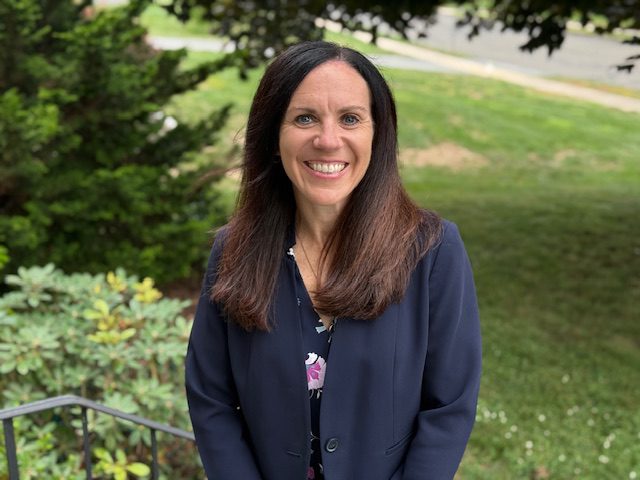Op-Ed: More Storms Coming without a Clean Energy Transition

Audio By Carbonatix

Farmington Avenue near Garfield was closed following Tropical Storm Isaias due to a large tree across the road that also brought down a slew of wires. Photo credit: Ronni Newton (we-ha.com file photo)
West Hartford needs a new energy plan, and now is the time.
By Julia Farber, Resident of West Hartford, CT
Just a few weeks ago, when our region was hit by Tropical Storm Isaias, the lights went out in most of West Hartford.
High winds knocked down large oak and pine trees, and those trees took out the power lines that served not only West Hartford, but 800,000 people in Connecticut. Eversource, our major electrical utility, struggled to get West Hartford back online for days in the heat of summer.
I lost power for 72 hours. I personally watched helplessly as my full refrigerator thawed out, spoiling hundreds of dollars of food. I have friends and colleagues that had no electricity – and in some cases no water – for almost a week. Colleagues shared they were frantically seeking generators to power their homes.
After a tumultuous summer of price hikes, the same utility is planning on charging us for this outage. I can’t help but wonder why we insist on doing it this way?
I know this year has been full of surprises and setbacks but why, in 2020, haven’t we moved on to a system that is more resilient, less reliant on the electrical wiring system of the past, and more focused on our modern needs? Why are we still connected to an aging and increasingly risky power grid? Why did it take days for our utility to get organized and to get help from crews outside the state? Why are my colleagues attempting to plan for the future by patching up their unreliable electrical and water pump systems with generators?
Why aren’t we demanding more from our utilities, our state, and our region?
Solutions exist today of course, but some say it’s too expensive. To that I ask, compared to what?
The U.S. has now experienced over 273 extreme weather events totaling over $1 billion in damages since 1980; five of these storms damaged Connecticut in just the last two years. And then within the last 10 years, there was Sandy. And Irene. That’s billions of dollars in damages we’ve endured already, and paid for through tax dollars, healthcare needs, property insurance, lost lives, and more.
It doesn’t have to be this way. We could upgrade to a smarter grid and invest in a clean, resilient energy transition today. We can adopt energy efficiency programs, building codes, demo projects, and clean energy solutions. We could shift or raise funds to make the transition easier, which would not only save the town and the state millions of dollars, but would help ween us off an incredibly dangerous hydrocarbon reliant system which is exacerbating the size and frequency of these storms.
West Hartford already spends an estimated $169 million per year (business and residential) on energy. This averages out to $2,700 per person. What if we switched that over? The state provides incentives today. Or we could start an infrastructure bond; or we could attempt a blockchain-based bond. Hartford is the insurance capital of the world; we could partner with one of the startups through InsurTech. Or we could create a new lottery fund. Or a shared pool fund.
The financing mechanisms are out there. The technology is out there. Why aren’t we demanding that we do this now, today? The extreme storms will not stop and we can’t wait for storm after storm to keep barreling through our neighborhoods dealing with the aftermath and the price tags over and over.
Fortunately, the Town of West Hartford is planning for a resilient future. The Town’s Clean Energy Commission is working on an update to the current Clean Energy Plan, and they are currently seeking public input on the draft.
I encourage you to take a look and to make your voices known, especially if you, like me, want a liveable future. Comments are encouraged by sending an email to [email protected] before the Clean Energy Commission’s next meeting (Monday, Sept. 21, 7 p.m.) but will be open after that date as well. If you don’t have an email address, write a letter addressed to the Commission and send it to Town Hall, 50 South Main St., West Hartford, CT 06107.
The town’s current draft identifies a need for incentives to support energy efficiency programs, renewables, storage systems, EV transportation, energy infrastructure and more. It’s imperative that we ensure that we’re investing in the future of this community, insulating it from future risks, and protecting our property and our families in the process. We need this coming plan to be fiscally responsible and get us away from the stranded assets of gas and coal as quickly as is feasible.
If you want to do more, sign onto the Sierra Club’s Ready for 100 Campaign, which supports a 100% clean and renewable energy transition for West Hartford. By adding your name, you’ll join a list of neighbors and friends who are interested in preserving the character of our wonderful town, while maintaining its attraction as a top place to live in the state for people of all generations, backgrounds, and socio-economic status.
If you want to do even more, ask for a free energy audit on your home and start taking the steps necessary to understand where your gaps exist. Future You will be so grateful.
We-Ha.com will accept Op-Ed submissions from members of the community. We reserve the right to edit all submitted content.
Like what you see here? Click here to subscribe to We-Ha’s newsletter so you’ll always be in the know about what’s happening in West Hartford! Click the blue button below to become a supporter of We-Ha.com and our efforts to continue producing quality journalism.




The site of the Ideanomics fiasco would be a great site for a massive solar array.
Quiet
No traffic
No emissions
Offsets costs directly to town.
How does that compare to the town paying a contractor to mow their lawn?
One of the only solutions that would have kept the lights on for so many people even with all the destruction would have been something like Green Mountain Power’s and Tesla’s solar/battery project.
https://www.tesla.com/gmp-bundle
A smart grid doesn’t help when all the wires are brought down.
Yep. We would need to be able to take everyone off grid, and that would be one way to do it! Or we could bury the power lines. Or we could have community solar, which wouldn’t insulate everything but would have kept losses down.